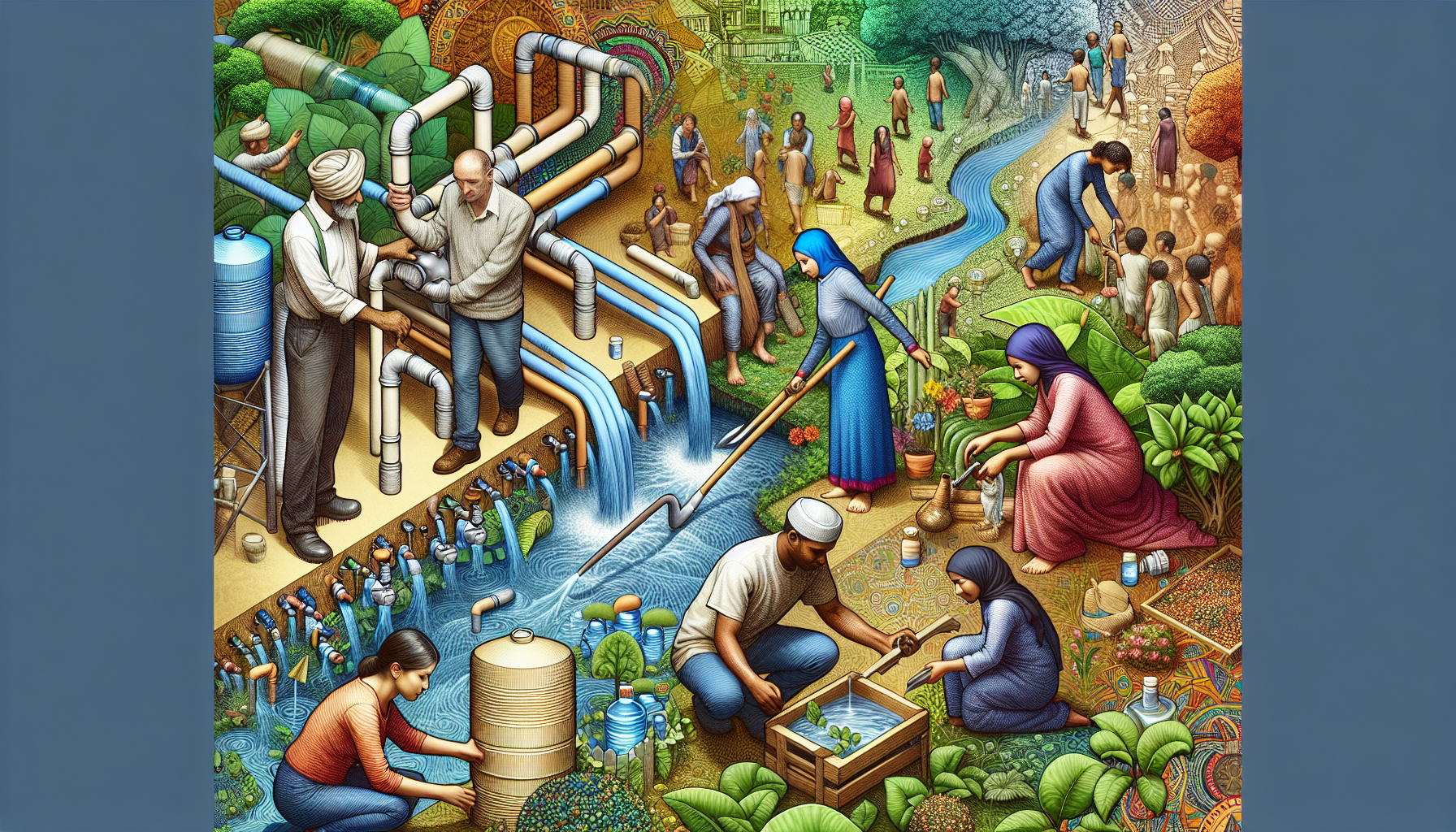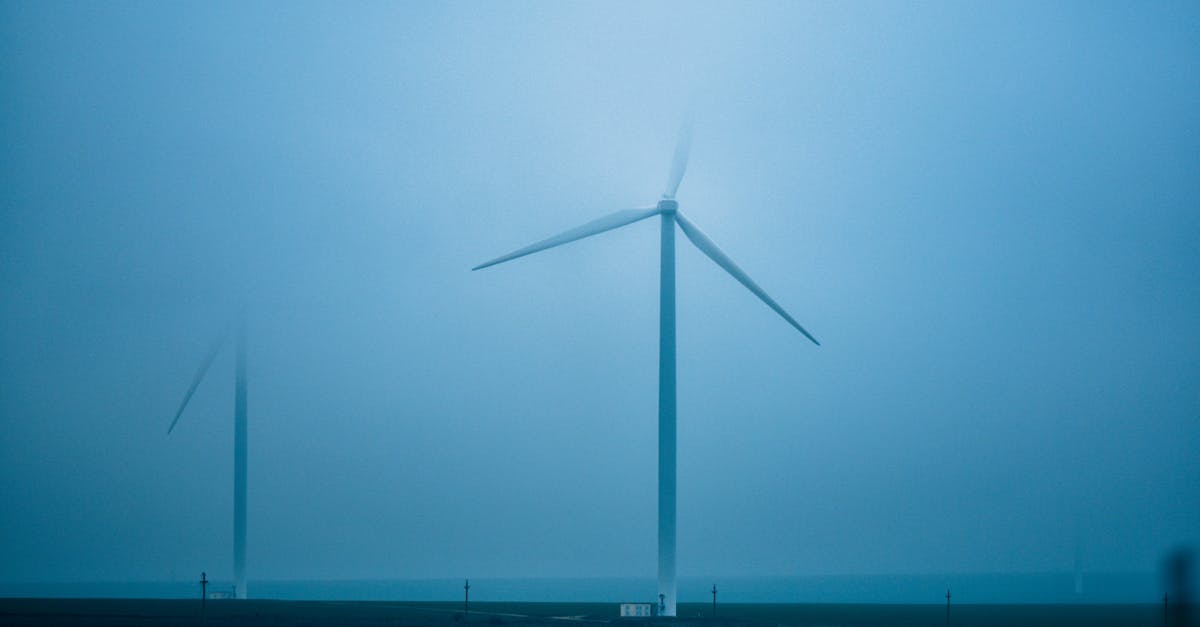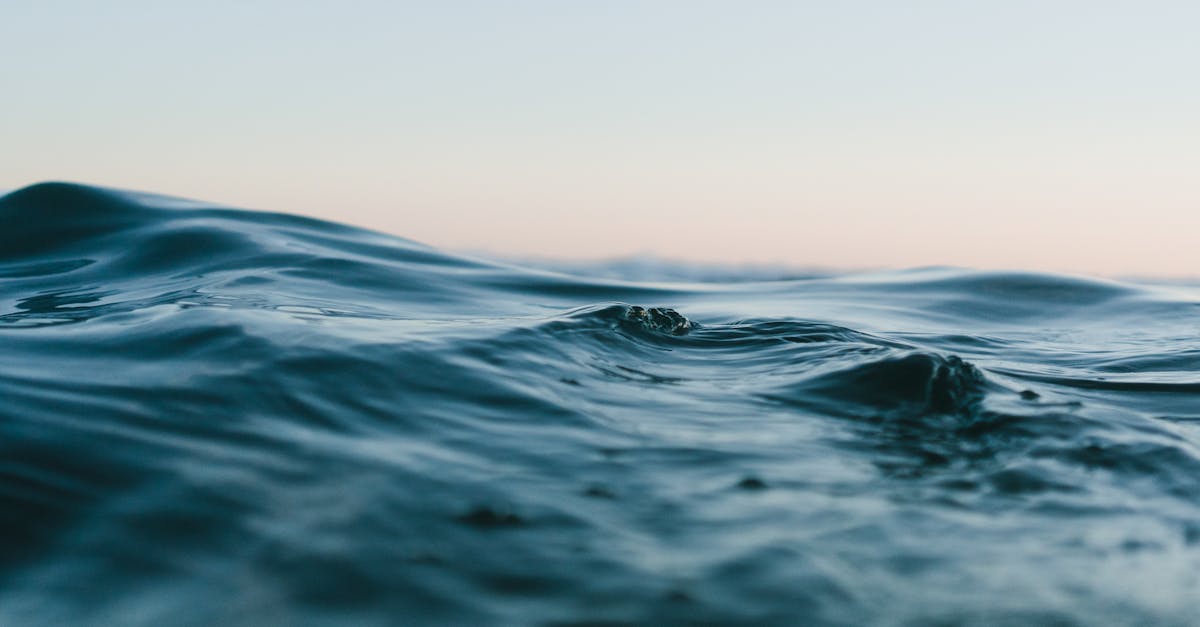Decentralizing Water Access for a Sustainable Future

The Water Freedom System: Embracing Sustainable Living Practices
Water scarcity is a global crisis that poses significant threats to human health, ecosystems, and economic growth. The Water Freedom System offers an innovative solution by decentralizing water access and reducing reliance on unsustainable practices. Through rainwater harvesting, water filtration, and purification, this system empowers communities to achieve water independence while promoting environmental sustainability and economic savings.
Thank you for reading this post, don't forget to subscribe!
Rainwater harvesting, a cornerstone of the Water Freedom System, captures nature’s bounty and provides numerous benefits. It reduces water bills, improves water quality, and conserves precious natural resources. Various rainwater collection methods, such as rooftop harvesting and cistern systems, make it accessible in diverse settings. Water filtration and purification are equally crucial, removing impurities and contaminants to ensure safe and clean water for consumption. Advanced technologies like reverse osmosis and ultraviolet disinfection guarantee water quality, while carbon filtration effectively removes impurities.
1. Water Scarcity: A Global Crisis
Water Scarcity: A Global Crisis
Water scarcity is a pressing global issue that affects billions of people worldwide. It occurs when there is not enough water to meet the demands of a population or ecosystem. The extent of water scarcity is alarming, with many regions facing severe shortages. One in three people globally do not have access to safe drinking water, and this number is projected to rise as the population grows and climate change intensifies.
Water scarcity has dire consequences for human health, ecosystems, and economic growth. When people do not have access to clean water, they are more likely to suffer from waterborne diseases, such as diarrhea, cholera, and typhoid. Water scarcity can also lead to malnutrition and stunted growth, as well as increased vulnerability to other diseases. Ecosystems also suffer from water scarcity, as it can lead to the loss of biodiversity, habitat degradation, and desertification. In addition, water scarcity can have a significant impact on economic growth, as it can lead to reduced agricultural productivity, industrial output, and tourism revenue.
Addressing water scarcity requires a multi-faceted approach, including water conservation, rainwater harvesting, and the development of new water sources. It is also important to raise awareness about the issue and to promote sustainable water use practices. By working together, we can help to ensure that everyone has access to this vital resource.
2. The Water Freedom System: An Innovative Solution
The Water Freedom System: An Innovative Solution
The Water Freedom System is a cutting-edge solution that decentralizes water access and reduces reliance on unsustainable practices. It is designed to provide households and communities with a reliable and sustainable source of clean water, regardless of their location or access to traditional water infrastructure. The system utilizes a combination of rainwater harvesting, water filtration, and purification technologies to capture, store, and purify water from natural sources.
One of the key benefits of the Water Freedom System is its ability to provide water independence. By harvesting rainwater and purifying it for consumption, households and communities can reduce their reliance on centralized water systems and expensive bottled water. This can lead to significant cost savings, as well as increased resilience in the face of water shortages or disruptions. Additionally, the system is environmentally sustainable, as it reduces the need for energy-intensive water treatment and transportation processes.
The Water Freedom System is a scalable solution that can be implemented in a variety of settings, from single-family homes to large-scale communities. It is particularly well-suited for areas that are experiencing water scarcity or that lack access to reliable water sources. By empowering households and communities to take control of their own water supply, the Water Freedom System can help to improve public health, economic development, and environmental sustainability.
3. Rainwater Harvesting: Capturing Nature’s Bounty
Rainwater Harvesting: Capturing Nature’s Bounty
Rainwater harvesting is the collection and storage of rainwater for future use. It is a sustainable and cost-effective way to meet water needs, especially in areas where water resources are scarce or unreliable. Rainwater harvesting systems can be simple or complex, depending on the needs of the user. Simple systems involve collecting rainwater from rooftops or other surfaces and storing it in tanks or barrels. More complex systems may involve the use of filtration and purification technologies to improve the quality of the harvested water.
Rainwater harvesting offers a number of benefits, including reduced water bills, improved water quality, and environmental sustainability. Rainwater is naturally soft and free of many of the contaminants found in tap water. It is also a good source of nutrients for plants. Rainwater harvesting can help to reduce the demand on local water supplies, which can be especially important during periods of drought. Additionally, rainwater harvesting can help to reduce stormwater runoff, which can lead to flooding and erosion.
Rainwater harvesting is a viable option for many households and communities. It is a sustainable and cost-effective way to meet water needs, while also reducing the impact on the environment. By capturing nature’s bounty, rainwater harvesting can help to ensure a secure and sustainable water future.
Benefits of Rainwater Harvesting
Benefits of Rainwater Harvesting
Rainwater harvesting offers a number of benefits, including reduced water bills, improved water quality, and environmental sustainability. Rainwater is naturally soft and free of many of the contaminants found in tap water, making it ideal for a variety of uses, including drinking, cooking, and bathing. Rainwater harvesting systems can also help to reduce water bills, as they provide a free source of water that can be used to supplement or replace municipal water supplies. Additionally, rainwater harvesting can help to reduce the demand on local water supplies, which can be especially important during periods of drought.
Rainwater harvesting is also environmentally sustainable. Rainwater that is not harvested often ends up as runoff, which can lead to flooding and erosion. By capturing and storing rainwater, we can help to reduce the impact of stormwater runoff and protect our waterways. Rainwater harvesting can also help to reduce the amount of energy required to pump and treat water, as it provides a natural source of water that does not require these processes.
Overall, rainwater harvesting is a sustainable and cost-effective way to meet water needs, while also reducing the impact on the environment. By capturing nature’s bounty, rainwater harvesting can help to ensure a secure and sustainable water future.
Methods of Rainwater Collection
Methods of Rainwater Collection
There are a variety of methods for rainwater collection, each with its own advantages and disadvantages. The most common methods include rooftop harvesting, cistern systems, and underground storage.
Rooftop harvesting involves collecting rainwater from rooftops using gutters and downspouts. This is a relatively simple and inexpensive method of rainwater collection, but it is important to ensure that the roof is clean and free of contaminants. Rooftop harvesting is also limited by the size of the roof and the amount of rainfall in the area.
Cistern systems involve storing rainwater in above-ground or underground tanks. Cistern systems can be more expensive to install than rooftop harvesting systems, but they can store larger volumes of water. Cistern systems also need to be properly maintained to prevent contamination.
Underground storage involves storing rainwater in underground aquifers. This is a more complex and expensive method of rainwater collection, but it can provide a large and reliable source of water. Underground storage is also less susceptible to contamination than above-ground storage methods.
The best method of rainwater collection for a particular application will depend on a number of factors, including the amount of rainfall in the area, the size of the roof or other collection surface, the budget, and the desired uses for the water.
4. Water Filtration and Purification
Water Filtration and Purification
Water filtration and purification are essential processes for ensuring the safety and quality of drinking water. Water filtration removes physical impurities, such as sediment and particles, while water purification removes chemical and biological contaminants, such as bacteria, viruses, and heavy metals.
There are a variety of water filtration and purification technologies available, each with its own advantages and disadvantages. Some of the most common technologies include:
-
Activated carbon filtration: Activated carbon is a highly porous material that can absorb a wide range of contaminants. Activated carbon filters are effective at removing chlorine, pesticides, and other organic contaminants.
-
Reverse osmosis: Reverse osmosis is a process that uses a semi-permeable membrane to remove impurities from water. Reverse osmosis systems are very effective at removing a wide range of contaminants, including bacteria, viruses, and heavy metals.
-
Ultraviolet disinfection: Ultraviolet disinfection is a process that uses ultraviolet light to kill bacteria and viruses. Ultraviolet disinfection systems are effective at removing a wide range of microorganisms, but they are not effective at removing chemical contaminants.
The best water filtration and purification system for a particular application will depend on a number of factors, including the quality of the source water, the desired level of purification, and the budget.
Importance of Water Purification
Importance of Water Purification
Water purification is the process of removing impurities, contaminants, and pathogens from water. It is an essential step in ensuring the safety and quality of drinking water. Water purification can be done through a variety of methods, including filtration, distillation, and reverse osmosis.
Impurities in water can include sediment, organic matter, and chemicals. Contaminants can include bacteria, viruses, and heavy metals. Pathogens are microorganisms that can cause disease. Water purification can remove all of these contaminants, making water safe to drink.
Water purification is especially important in areas where the water supply is not regulated or is known to be contaminated. It is also important for people who are immunocompromised or who have other health conditions that make them more susceptible to waterborne diseases. Water purification can help to protect these people from getting sick.
Types of Water Filtration Systems
Types of Water Filtration Systems
There are a variety of water filtration systems available, each with its own advantages and disadvantages. Some of the most common types of water filtration systems include:
-
Activated carbon filtration: Activated carbon is a highly porous material that can absorb a wide range of contaminants. Activated carbon filters are effective at removing chlorine, pesticides, and other organic contaminants.
-
Reverse osmosis: Reverse osmosis is a process that uses a semi-permeable membrane to remove impurities from water. Reverse osmosis systems are very effective at removing a wide range of contaminants, including bacteria, viruses, and heavy metals.
-
Ultraviolet disinfection: Ultraviolet disinfection is a process that uses ultraviolet light to kill bacteria and viruses. Ultraviolet disinfection systems are effective at removing a wide range of microorganisms, but they are not effective at removing chemical contaminants.
The best water filtration system for a particular application will depend on a number of factors, including the quality of the source water, the desired level of purification, and the budget.
5. Sustainability: The Ultimate Goal
Sustainability: The Ultimate Goal
Sustainability is the ability to meet the needs of the present without compromising the ability of future generations to meet their own needs. It is a complex and multifaceted concept that encompasses environmental, economic, and social factors. In the context of water use, sustainability means using water in a way that does not deplete or degrade the resource for future generations.
The Water Freedom System is a sustainable solution to water scarcity because it reduces reliance on unsustainable practices, such as the use of bottled water and the over-extraction of groundwater. By harvesting rainwater and using water filtration and purification technologies, the Water Freedom System provides a reliable and sustainable source of clean water. Additionally, the system can help to reduce water pollution by reducing the amount of runoff that enters waterways.
Sustainability is an important goal for any water management system. By using water wisely and protecting water resources, we can ensure that future generations have access to clean and affordable water.
Environmental Benefits
Environmental Benefits
The Water Freedom System has a number of positive environmental benefits, including water conservation, reduction of plastic waste, and preservation of natural ecosystems.
Water conservation: The Water Freedom System reduces reliance on unsustainable water sources, such as bottled water and over-extracted groundwater. By harvesting rainwater and using water filtration and purification technologies, the system provides a sustainable and reliable source of clean water. This can help to reduce water scarcity and protect water resources for future generations.
Reduction of plastic waste: Bottled water is a major source of plastic pollution. The Water Freedom System reduces the need for bottled water by providing a clean and affordable alternative. This can help to reduce the amount of plastic waste that ends up in landfills and oceans.
Preservation of natural ecosystems: Over-extraction of groundwater can damage natural ecosystems, such as wetlands and rivers. The Water Freedom System reduces the need for groundwater extraction by providing a sustainable source of water. This can help to protect natural ecosystems and the wildlife that depends on them.
Economic Savings
Economic Savings
The Water Freedom System can lead to significant cost savings on water bills and maintenance expenses. By harvesting rainwater and using water filtration and purification technologies, the system reduces reliance on expensive municipal water supplies and bottled water. Additionally, the system requires minimal maintenance, which can further reduce costs.
Water bills: The cost of municipal water can vary depending on location, but it can be a significant expense for many households and businesses. The Water Freedom System can help to reduce water bills by providing a free and reliable source of water. This can lead to substantial savings over time.
Maintenance expenses: The Water Freedom System requires minimal maintenance. The rainwater harvesting system and water filtration and purification technologies are all designed to be durable and low-maintenance. This can save time and money on maintenance costs.
Community Empowerment
Community Empowerment
The Water Freedom System promotes self-sufficiency, resilience, and community engagement in water management. By providing a decentralized and sustainable source of water, the system empowers communities to take control of their own water supply. This can lead to increased resilience in the face of water scarcity or contamination events.
Self-sufficiency: The Water Freedom System makes communities less reliant on external sources of water. This can be especially important in remote or disaster-prone areas. By harvesting rainwater and using water filtration and purification technologies, communities can ensure that they have a reliable supply of clean water, even in the event of a disruption to the municipal water supply.
Resilience: The Water Freedom System helps communities to become more resilient to water scarcity and contamination events. By reducing reliance on unsustainable water sources, such as over-extracted groundwater, the system helps to protect water resources for future generations. Additionally, the system can provide a backup source of water in the event of a disruption to the municipal water supply.
Is the Water Freedom System suitable for all locations?
The Water Freedom System can be implemented in a variety of locations, but it is important to assess the local rainfall patterns, water quality, and regulations before installing the system. In areas with low rainfall, the system may need to be supplemented with other water sources. It is also important to ensure that the water quality meets the standards for drinking water in the local area.
How much does the Water Freedom System cost?
The cost of the Water Freedom System will vary depending on the size and complexity of the system. A basic system for a single-family home may cost around $5,000, while a larger system for a commercial building may cost upwards of $100,000. However, the system can lead to significant cost savings on water bills and maintenance expenses over time.
How can I get started with the Water Freedom System?
There are a number of companies that sell and install Water Freedom Systems. It is important to do your research and choose a reputable company with experience in installing these systems. Once the system is installed, it is important to follow the manufacturer’s instructions for maintenance and operation.




